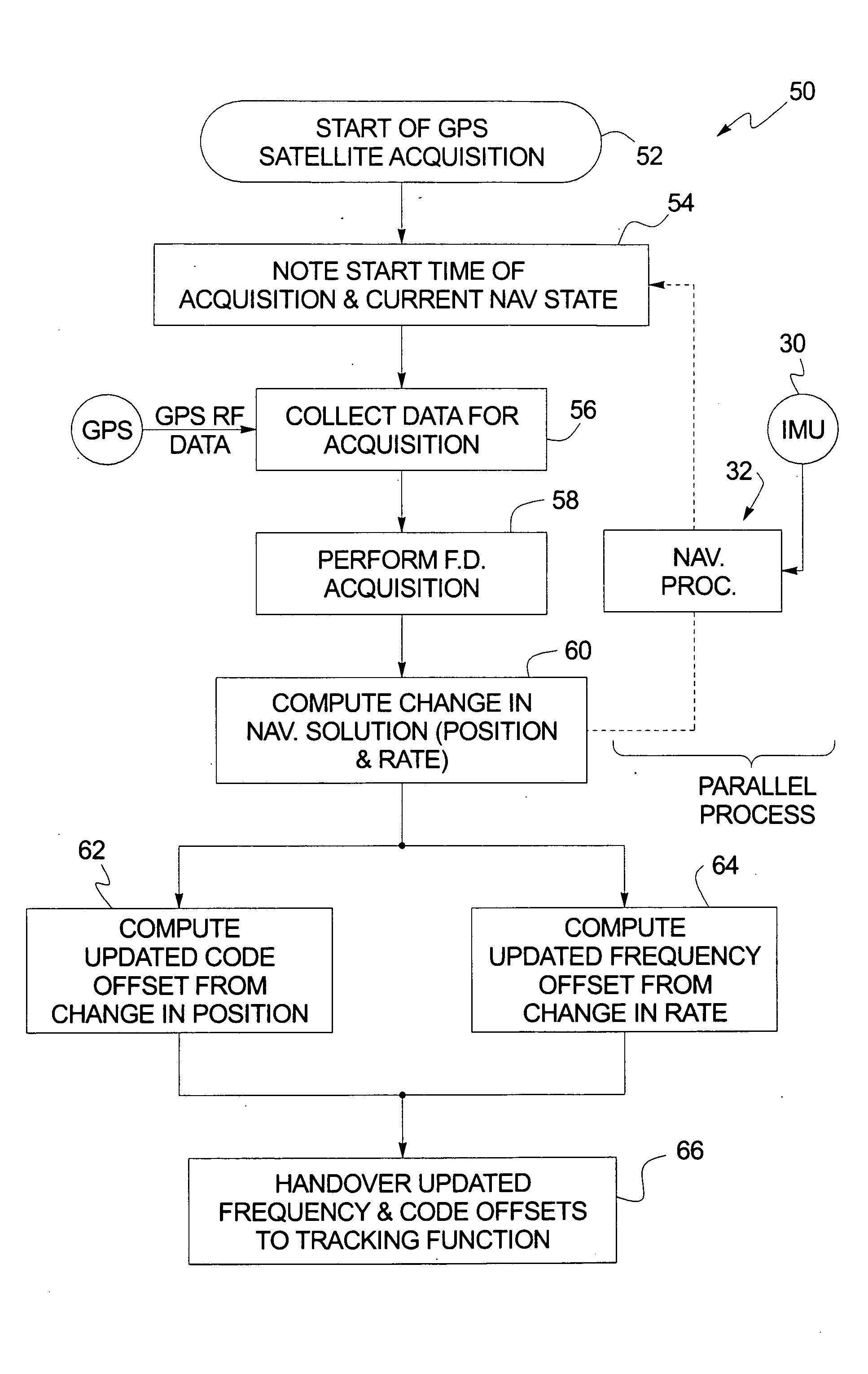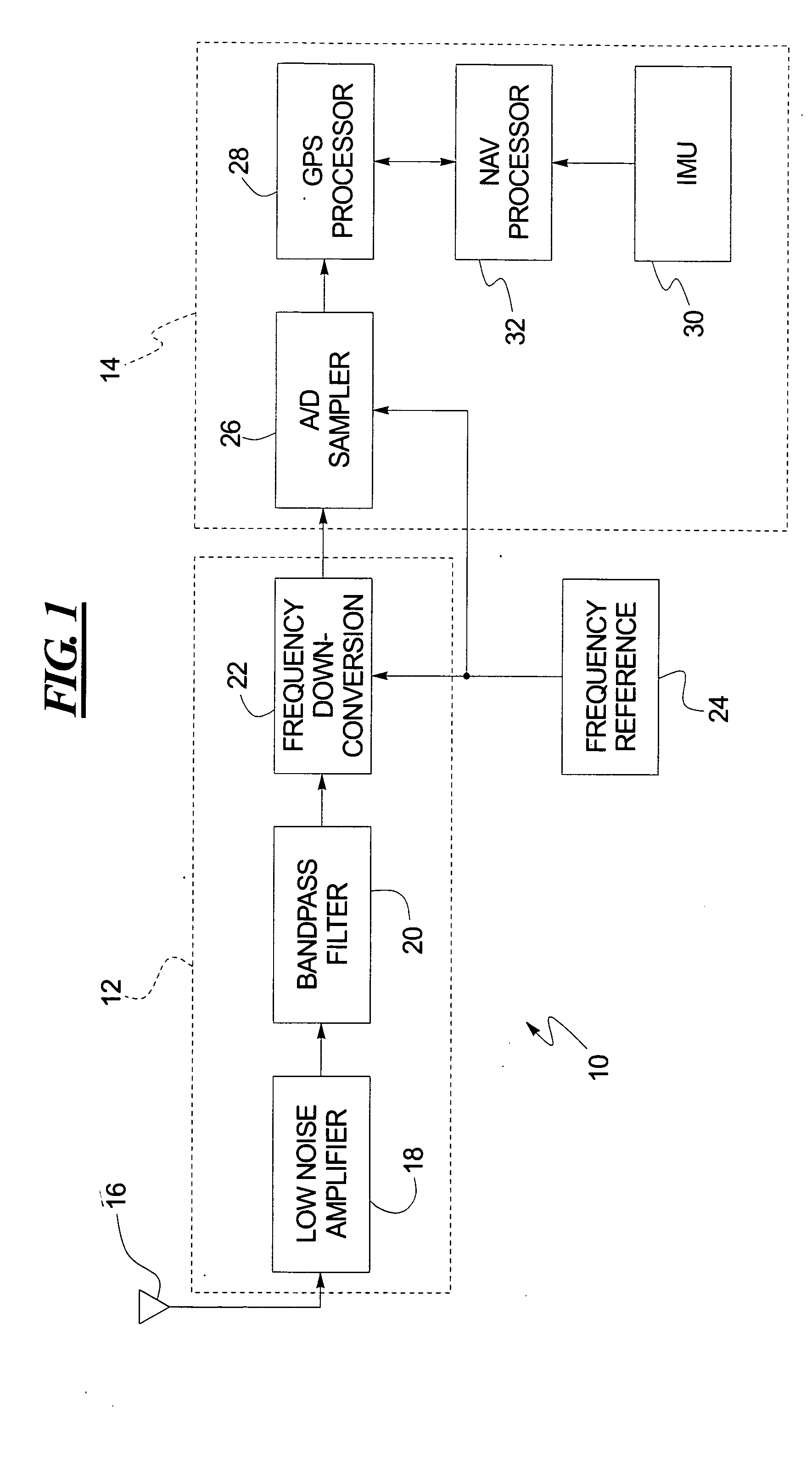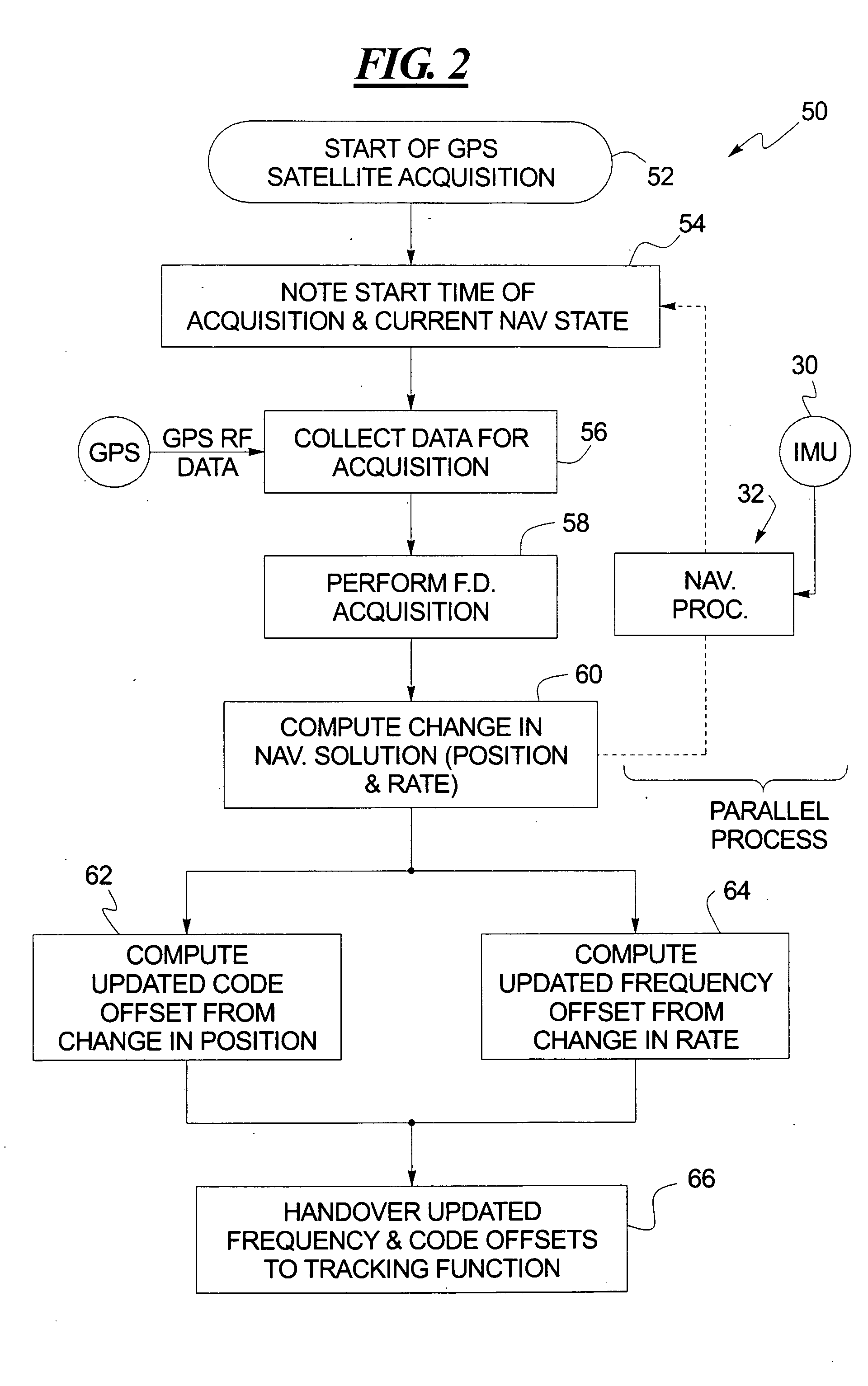Software GPS based integrated navigation
a software gps and integrated navigation technology, applied in vehicle position/course/altitude control, process and machine control, instruments, etc., can solve the problems of mixing circuit design and re-design, and high cost of gps receiver design and developmen
- Summary
- Abstract
- Description
- Claims
- Application Information
AI Technical Summary
Benefits of technology
Problems solved by technology
Method used
Image
Examples
Embodiment Construction
[0019] As shown in FIG. 1, a GPS receiver 10 includes a GPS front end 12 and a system processor 14. The GPS front end 12 receives the incoming analog GPS signal from a GPS antenna 16. This analog GPS signal is amplified by a low noise amplifier 18 and is filtered by a bandpass filter 20. The low noise amplifier 18 and the bandpass filter 20 may be provided in multiple stages, if desired.
[0020] The analog GPS signal at the output of the bandpass filter 20 is downconverted in a frequency downconverter 22 by mixing the analog GPS signal with a local oscillator signal to shift the carrier frequency of the incoming analog GPS signal to a lower and more manageable frequency band. This downconversion can be performed multiple times to bring the frequency of the analog GPS signal down in steps to the final desired frequency. Each mixing operation produces a high frequency information band along with the lower frequency band. Therefore, each mixing stage of the frequency downconverter 22 ma...
PUM
 Login to View More
Login to View More Abstract
Description
Claims
Application Information
 Login to View More
Login to View More - R&D
- Intellectual Property
- Life Sciences
- Materials
- Tech Scout
- Unparalleled Data Quality
- Higher Quality Content
- 60% Fewer Hallucinations
Browse by: Latest US Patents, China's latest patents, Technical Efficacy Thesaurus, Application Domain, Technology Topic, Popular Technical Reports.
© 2025 PatSnap. All rights reserved.Legal|Privacy policy|Modern Slavery Act Transparency Statement|Sitemap|About US| Contact US: help@patsnap.com



